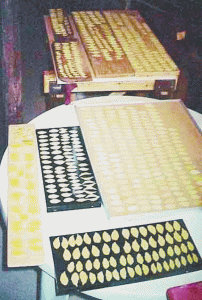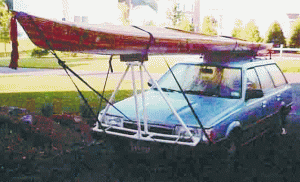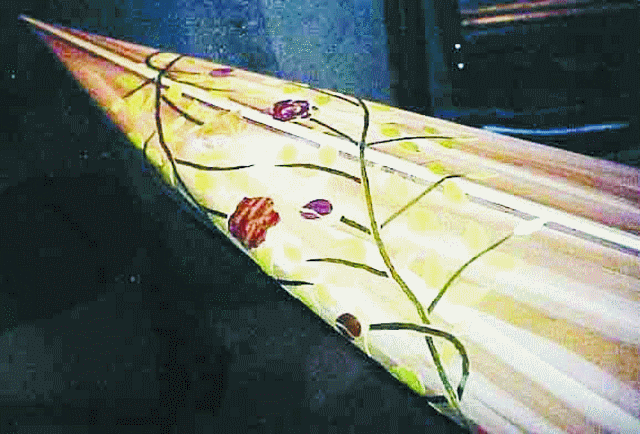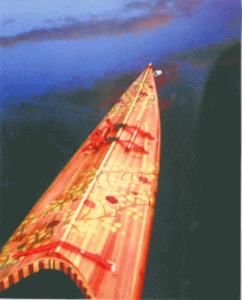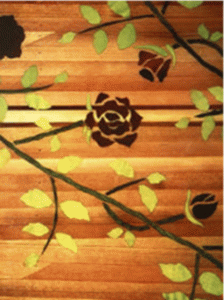
Clark Eid, a research investigator for Bristol-Myers Squibb in Connecticut, has a daughter named Amanda who suffers from Rett Syndrome. Rett Syndrome strikes about one in 10,000 children, and resources for research are limited in the United States. So Clark built a kayak named Double Helix and organized The Great Mississippi River Race for Rett Syndrome, held May 5-31, 2001.
Participants in the race/fundraiser were to use only human-powered boats to travel non-stop in pursuit of a world record, and to raise awareness of this disease. Three world records were set in the race: longest non-stop canoe/kayak race in history, best time paddling the entire Mississippi River during the longest non-stop canoe/kayak race, and Double Helix on the best time for paddling the entire Mississippi in a 2-person kayak, with the same paddlers.
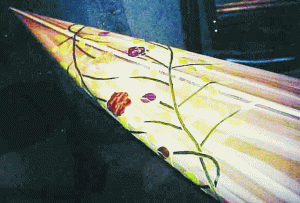
Nick Schade of Guillemot Kayaks drafted the blueprints for the hull and Clark built her. The kayak is decorated with two 30′ rose vines that wrap completely around the 25′ kayak. Clark designed the rose vine to mirror a segment of double stranded DNA that codes for a peptide spelling AMANDA’S DREAMKEEPER. The marquetry application uses over 2,000 individual pieces of veneer. The 120 roses in the design are made of 63 different wood veneers. Veneer pieces were applied by coating one side of the piece with Tight Bond II™ wood glue and allowing it to dry. When the pieces were positioned on the craft, a hot iron was used to melt/conform each piece to the craft. Finally, a layer of fiberglass cloth was applied followed by coats of WEST SYSTEM® epoxy (105/207) and topped off with coats of varnish.
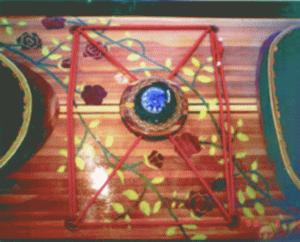
Almost 100 different types of wood were used to build and decorate Double Helix. The interior of the craft is carbon fiber and epoxy and the exterior is fiberglass, epoxy and varnish. Titanium was used for internal support and for the rudder. The wood used for the compass ring, rudder catch and hatches were leftovers from the reconstruction of AMISTAD.
For more information, visit dreamkeeper.org.
